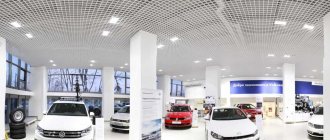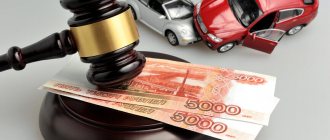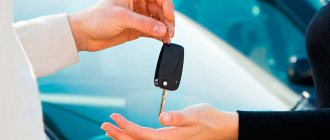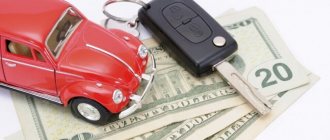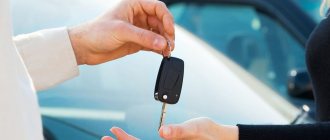Where do most Russian residents buy new cars today? At car dealerships. It is through them that most of the country’s car turnover passes. Many buyers believe that this is the most reliable way to acquire a personal vehicle. In their opinion, with such a purchase, the consumer is especially protected. These assumptions are not unfounded. But only the consumer who knows his rights well and uses the law to his advantage can consider himself truly protected.
Tips for communicating with your dealer
When you come to the dealership to buy a car, you need to properly communicate with the car dealer.
The buyer has the right to expect to receive a discount under certain conditions. In addition, it is worth considering that the seller’s task is to sell the most expensive version of the car as possible.
Once at the car dealership, you need to check the following information:
- Are there any documents proving the legality of the car you like;
- what technical characteristics does this car have?
- on what terms the transaction is concluded, including such nuances as the currency of payment;
- under what conditions is a discount on cars granted?
- Carry out a thorough independent inspection of the selected vehicle;
- based on the inspection results - bargain.
The last point is very important because many buyers think that the price quoted by the employee is final. But this is not true, and there are always ways to reduce it through trading. Usually, the price quoted by the salon already includes this possibility.
What do they check when buying a car at a dealership?
The future car owner should be as careful as possible when purchasing a car from a car dealership. In order not to encounter various troubles later, it is better to subject the car to a series of checks. Moreover, domestic legislation provides for such a right for the buyer.
First of all, pay attention to a number of technical characteristics.
- Body condition. This is where a visual inspection of the car begins, since most defects are discovered by carefully looking at the body. Scratches and chips will cause corrosion to spread. It is worth paying attention to the presence of stickers that are used to hide defects. And new paint, which indicates that the car has been in an accident. The body inspection must be carried out in daylight.
- Places where parts are connected. When looking under the hood and into the interior, the buyer should pay special attention to how well the parts are connected. Quality will be evidenced, for example, by how smoothly and silently the car doors close.
- Engine noise. This parameter is the easiest way to determine how well the car's engine feels. In the absence of malfunctions, its noise should be smooth and monotonous, without any knocking or other extraneous sounds. The latter do not necessarily indicate something truly serious, but they are undoubtedly a reason to reduce the price.
- Air conditioner. Its operation must be checked if it is included in the package. Air conditioner repair is never cheap. Therefore, you should not skip this stage and then find yourself in a situation where you will need to spend a lot of money. If the dealership's salespeople claim that it is not working because it needs refueling, then the buyer should still insist on diagnostics or a discount.
- Presence of leaks. This indicates leakage of the nodes. The reason is that someone has already gotten inside the engine. Leakage itself indicates the danger of lubricant leakage with all the consequences.
- The color of the smoke from the exhaust pipe. Not everyone knows, but the color of the smoke is one of the main indicators of good engine performance, along with noise. On a working car it is always quite light. Darkening indicates that the oil supply is excessive and at a minimum, replacement of the injectors is required.
- Automatic transmission condition. The easiest way to check how well the transmission is feeling is to check the condition of the oil. In a working car, oil, if dropped onto a white cloth or napkin, will not have any foreign odors and will be quite clean. At the same time, if the oil is too pure and quickly absorbed, then it is likely to be replaced immediately before sale to hide automatic transmission problems. If, on the contrary, the oil is dark or cloudy, this means that the car cannot be operated without major repairs.
- The progress of the car. Be sure to drive the car around the test site, gradually increasing the speed. A good car does not drive on the road at any speed, and its engine and wheels do not make unnecessary sounds.
- Condition of suspension and brakes. This is the final and one of the most important stages of evaluating a car before purchasing it. There are several ways to check the brakes, for example, driving over bumps. But the only acceptable way for a car dealership is to visit a car service center, where they will check the suspension and braking system.
Each of these parameters is not only important because it speaks about the condition of the car, but any deviations can significantly affect the price. And, having discovered them, the buyer can qualify for a fairly decent discount, which can be several times higher than the cost of fixing the problem.
What to check for a new car when buying at a car dealership? How to accept a new car?
A new car is a guarantee that you are buying something that has not been used before, and therefore has not been subjected to operation (except perhaps for driving the car from the factory to the dealership) and, as a result, to various damages both outside and inside the car . In addition, this is a guarantee that your new car is not assembled completely correctly. Otherwise, the dealership or manufacturer will be required to fix the problem. But before this, you will still have to spend some time collecting the necessary papers, diagnosing the problem, and also wait quite a lot of time until it is fixed. Therefore, when receiving a car at the showroom, it is necessary to accept it correctly - that is, check the maximum possible number of components that can be assessed on the spot without additional equipment, despite the fact that emotions from a new purchase sometimes go off scale and prevent a sober assessment of the situation.
How to properly accept a new car from the showroom, what needs to be checked on a new car, and what should you pay attention to first when inspecting a new car? It is better to answer these questions point by point, or even better, print out this list and take it with you to the car dealership appointment. To do this, we present the most concise list, without unnecessary explanations:
Checking the car from the outside
- First of all, you need to look at the VIN number of the car and compare it with what is recorded in the title.
- Check the glass and all glass-containing external elements of the car (headlights, taillights, mirrors) for chips and cracks.
- Inspect each more or less extensive plane of your car from two or three viewing angles (first so that the view falls perpendicularly, then at an angle of 45 degrees, then 10-15 degrees) for dents and dents.
- Check the gaps in all openings and joints of body elements: the gaps should be even (elements are equally spaced throughout), and adjacent body elements should not protrude beyond each other (be at the same level).
- Inspect the edges of the bottom of the car: the bottom of the front and rear bumpers, sills for chips and abrasions - especially carefully inspect the front bumper.
Checking the car under the hood
- Open the hood and check the levels of all fluids (usually the oil level in the engine and gearbox, the level of anti-freeze fluid and windshield washer fluid, as well as the oil in the power steering if equipped with power steering.
- Find the year of manufacture on the battery and check that it matches the year of manufacture of the vehicle.
Checking the car inside
- First of all, check how softly, confidently and with equal force the doors open and close, incl. trunk lid and gas tank.
- Then check the power windows (lower and raise all windows) and, if present, door locks, power windows, power side mirrors, and also door lock switches for opening doors from the inside (protection against accidental opening by children).
- Check the operation of the interior lighting, trunk and glove compartment (if equipped).
- Check all directions of adjustment of the seats, steering wheel, and also that the rear seats are folded correctly. Also check the backs of the rear seats for free play - there should not be any.
- Check that the seat belt buckles are securely fastened.
- Start the car, make sure there are no error or malfunction indicators on the dashboard and check the operation of the low and high beams, if present, the operation of the radio, interior airflow, heater, air conditioning, wipers in all modes, heaters for all windows, mirrors and seats, tilt angle corrector headlights
- Check the operation of the turn signals, brake lights, reverse indicator, low and high beams by getting out of the car (ask your manager to switch modes inside the car).
Checking the car after a short test drive
After you leave the dealership, it will also be useful to check the operation of the car's handbrake (handbrake) by stopping on an incline, and also check the temperature of the brake discs (it should not be much higher than 100 degrees).
Other Features
But checking the technical specifications is not the only thing you should pay attention to when buying a vehicle at a car dealership. You need to pay attention to the details.
- Eliminate the imposition of a more expensive configuration option if the buyer does not need it. Employees of car dealerships are often guilty of this.
- Check that the year of manufacture matches the declared one. If you need a completely new car, then take into account that at the beginning of the year, showrooms sell the previous car.
- Availability of a VIN number if the car is used.
- Monitor the exchange rate of foreign currency, which is the base currency when calculating the cost of a vehicle. It should not differ too much from what is officially established.
- Delivery times for cars purchased to order must be reasonable. They should not be delayed.
- The contract must specify the amount of the penalty for failure to provide the car, despite the advance payment made for it.
- The equipment specified in the contract must match the one actually delivered to the buyer.
- A car dealership should not impose additional expensive services and products, such as all kinds of mats and brushes.
Taking these points into account can significantly save money in the consumer’s wallet.
Registration of a car purchased at a dealership
The Code of Administrative Offences, in Article 19, indicates that a person who has purchased a car must register it with the traffic police MREO within ten days. Otherwise, the car owner will face a fairly significant fine of up to 2 thousand rubles or even deprivation of rights if the violation was repeated.
State registration can be completed in any locality in the country. To do this, there is no need to go to your place of registration. The traffic police will independently submit all the necessary information to the inspection and tax departments in the region of residence of the car owner.
In general terms, the procedure for registering a new car looks simple.
- First of all, make an appointment at the MREO traffic police department in the region where the car owner plans to register his vehicle. They do this both through the government services portal and by telephone. If the date of the transaction is already known, it is better to sign up in the queue before purchasing the car.
- The second stage involves submitting an application. Its form is also downloaded on the State Services portal. Moreover, it can be filled out and submitted electronically, which eliminates the need to stand in queues.
- If a compulsory motor liability insurance agreement was not concluded at the time of purchasing the car, this must be done before going through the registration procedure.
- Pay the state fee. Details and amount are indicated on the inspection website.
- At the appointed time, they bring the car for inspection, taking with them the entire package of documents.
- Within an hour, the inspector must carry out an inspection, checking that the car is equipped with everything that is provided for by the traffic rules. The technical condition of the main components is also checked.
- After a positive decision is made, the motorist is issued a license plate.
The list of documents required for state registration is quite small and includes:
- civil passport of the vehicle owner;
- technical passport (PTS) of the new car;
- the registration application itself, if it was not submitted online;
- a receipt indicating that the state fee has already been paid.
Before submitting, check in advance that all documents are present.
What documents for a car need to be checked before purchasing at a dealership?
Buying a new car is one of the largest purchases in a person’s life, and therefore requires a serious approach to choice. When making such a transaction, there is always a risk of being deceived, even if the car is purchased at a dealership. The most common scam at dealerships is the sale of cars restored after an accident.
A new vehicle can be damaged both during transportation from abroad and when moving around a car showroom, test drive, etc. Such cars are repaired and sold as new units. When buying a car, few people can determine the fact of restoration, but this will certainly affect the further serviceability of the vehicle. While legal cleanliness, appearance and technical serviceability are rarely in doubt among car enthusiasts, some signs can still give away a restored car. Before signing documents, buyers are recommended to conduct a full inspection of the vehicle body and paintwork, as well as:
- check the documents for the car and the car dealership license;
- carefully examine the exterior and interior of the car;
- check the technical characteristics of the car and their compliance.
Included with new vehicles, the manufacturer always provides a spare wheel, a wheel wrench and a jack. This is the minimum that every car should have. If the package is not included, you must refuse the purchase.
Also on the list of mandatory vehicle equipment are:
- two sets of keys;
- signaling;
- rugs;
- winter and/or summer tires.
All equipment and boxes from it must be present in the car, which confirms the mark of its quality.
In addition, the buyer needs to check the car dealership documentation:
- car operating instructions;
- service book;
- contract of sale;
- Declaration of vehicle transportation;
- PTS for the car.
The lack of title documents may become an obstacle to further registration of the vehicle with the traffic police.

